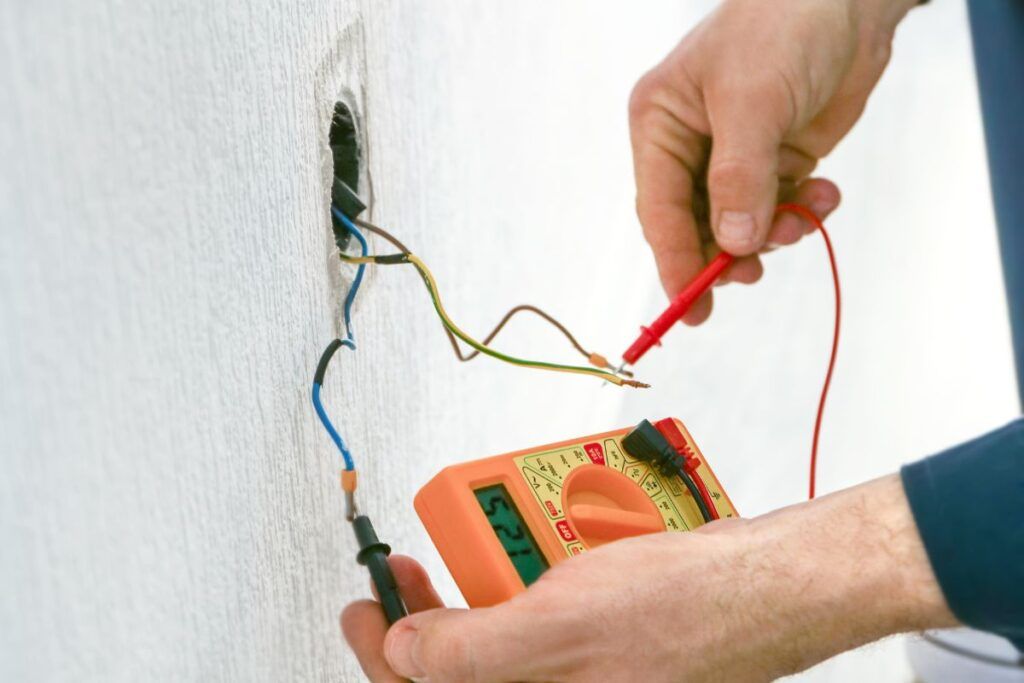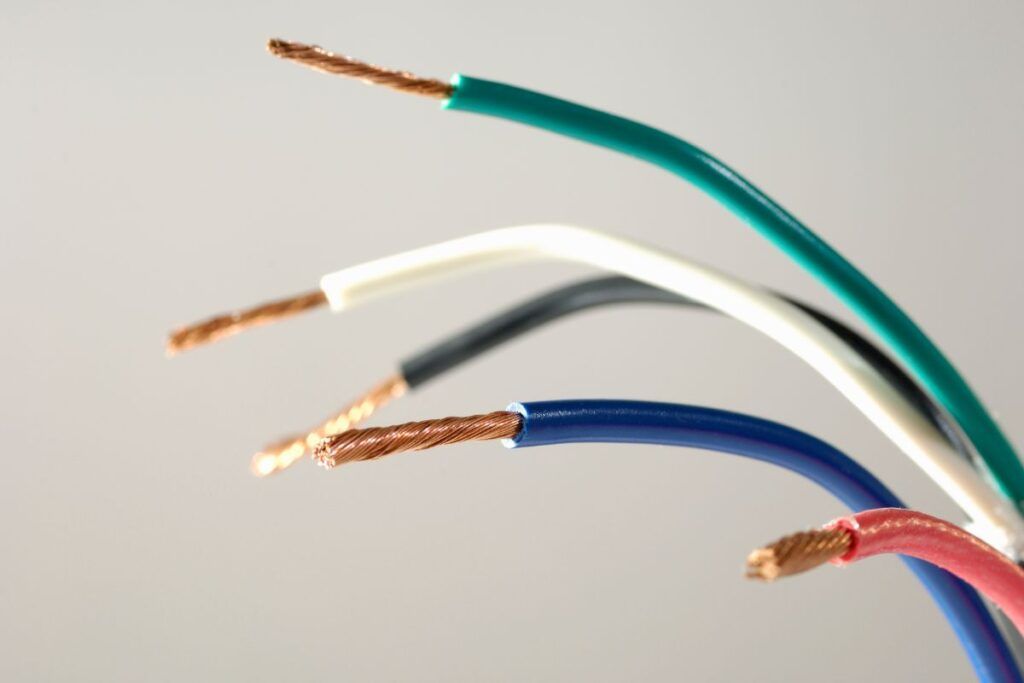Out of the three wires, hot, neutral, and ground, neutral wires are used to carry the current from the hot wire and send it back to the main power source. A question arises: since it carries current, will the neutral wire give you shock? Let’s find out.
A neutral wire doesn’t give shock since it is connected to the grounding. However, in certain circumstances, like a broken wire, loose connections, or hot and neutral lines connected together, can lead to a severe shock. You will also get an electric shock if you touch a neutral wire on load.
Getting electric shocks from neutral wires is very unexpected. Stick to this article until the end to know the reasons behind the issue and how to correct it. We shall also discuss a bit about neutral wire voltage and burning.

Check out our list of top-handpicked products for all your electrical, appliance, and HVAC system needs to keep your home running smoothly.
This post includes some affiliate links.Will a neutral wire shock you?
Generally, neutral wires cannot give you a shock.
They are connected with the ground wire for which their voltage remains zero.
But that doesn’t mean that you should handle neutral wires carelessly.
In certain events, the neutral wires will shock you.
The neutral wires have zero voltage.
So, a wire without any voltage is barely going to shock you.
Besides, we all know that the neutral wires are always connected with the ground wire.
So, while you stand over the ground and touch a neutral wire with zero voltage, your body doesn’t receive any voltage.
Therefore, your body will not receive any shock from the neutral wires.
Also read: Why Would A Ground Wire Have Power? (Possible Problem+Fix)
Why do neutral wires give shock?
However, having zero voltage and no electricity is different.
Neutral wires do carry some amount of currents.
The hot wire carries the current from the main power source and transfers it to the neutral wires.
The neutral wires carry this current, send it back to the main power source, and complete the circuit.
So, in that sense, neutral wires do have some current.
The human body has good resistance to the current.
Neutral wires are sometimes known to have any low voltage, around 2-5V.
Our body can absorb and handle up to 50V.
If the neutral wire malfunctions, the wire may have a higher voltage.
Touching it will shock you because the human body is also a good conductor of electricity.
One common reason behind neutral wires giving shock is a broken wire.
The wire may be broken, but the current keeps flowing and tries to find a source to return to the circuit.
So, you get a current shock when you touch it.
A neutral wire will give a shock if the wire becomes hot.
But when does that happen?
Here are some common reasons behind neutral wires becoming hot and giving bad electric shocks:
Also read: Why Do I Have Voltage On My Neutral? (Possible Problems+Fix)
Open neutral

Open neutral means a broken neutral.
Due to some reasons, the wire gets broken somewhere in the middle.
This break interrupts the current flow while returning to the main source.
Despite being broken, the current must return to the main power.
So, it keeps flowing in the wires.
The moment you touch it, the current will try to return by flowing through your body.
So, you receive a dangerous shock here.
You do not expect a neutral wire to shock, for which the shock feels worse.
A broken wire can also start a fire hazard.
Electrical feedback
The current gets through a plugged-in appliance with the hot wire and returns to the panel through the neutral wire.
If you tie all the neutral wires together, electricity feedback will take place, making the neutral wire hot and shock you when touched.
If you have a hot wire on a circuit with no neutral wire to return the current, the current will catch any one wire from the other tied-up wires and return to the panel.
In such a case, you won’t be able to know which wire the current has taken.
So, if you accidentally touch that wire, you will receive a bad shock.
Hot and neutral wires are connected or reversed.
Both hot and neutral wires carry currents.
The former carries it from the main power, and the latter returns it to the main power and completes the circuit.
If you join both, there will be an excessive current flow.
It will further cause overloading, which the wires cannot handle.
As a result, touching the neutral wire will shock you badly.
Also, there will be serious short circuits and fire hazards.
Hot and neutral reversed will also have the same results.
Generally, neutral doesn’t shock you.
But if you use it in the place of the hot wires, it will turn the neutral hot and shock you when touched.
Wrong wire

Sometimes, people mistake the hot wire for the neutral wire.
In most cases, the hot wires are black, red, blue, or yellow, and the neutral wires are white or gray.
But in some areas, the neutral wires are the blue wires, while the hot wires are brown, gray, yellow, or blue.
That is why you sometimes consider the neutral wires to be hot and use them as the same.
If you use neutral wires as hot wires, neutral wires will shock you without fail.
So, before you commit such mistakes, know which are the hot, neutral, and ground wires in your circuit.
If the colors confuse you, use your multimeter to understand or ask the electrician while they set up everything.
In the multimeter, the neutral wires will not show any results as the hot wires.
Tricky readings
Some people consider the neutral wires to be the hot wires as they sometimes give a reading of 120V.
The neutral wires give a 120V reading when you place the multimeter between the two neutral wires while the circuit is under load.
So, if you touch the neutral wires under load, they can give you a bad electric shock.
High copper resistance
Most people use copper wires as copper is a great conductor of electricity.
Copper can handle loads of electricity without heating up, and thus you can use smaller gauges.
Besides, the wire is thin and malleable, which you can use for long distances and have less chance of breakage.
However, a very long wire can increase the resistance of the wire, for which the current flow increases and your circuit’s performance gets compromised.
Since the human body doesn’t have such high resistance, touching the neutral copper conductor with longer lengths can shock you.
Will neutral wire have voltage?

As mentioned before, neutral wires do not carry any voltage.
Still, they do carry currents to return it to the main power.
The reading of the neutral wires mostly remains at zero voltage.
However, the wire may have some voltage as the current’s return path.
But, if the voltage increases, you will receive a shock.
The reasons behind neutral wires having voltage are:
- The wire carries an extremely high and unbalanced load for which the neutral wires become live and give a shock.
- There could be some harmonic distortions due to which the neutral wires start carrying high voltages.
- You must have removed the neutral wires, or the connection has become loose, for which the voltage may show around 120VAC.
- You might have reversed the neutral and hot wires.
- There might be some defect in wiring, connections, or other electrical devices.
- The ground wire must have been at some fault, so the neutral wires get more strained and become hot. Touching it will shock you.
Why would a neutral wire burn?
If neutral wires can carry current and shock you, they can burn too.
Here are some common reasons behind neutral wire burning:
- Neutral wires are not habituated to carrying excessive current loads. They are only supposed to carry the current and return it. If there is an excessive flow of energy, it heats the wire, becomes hot, and burns due to overloading.
- It is not a good idea to connect hot and neutral wires as it causes arcing. Besides, since both carry currents, connecting them creates an excessive force of current which becomes unable to handle. So, the wires cannot handle such loads and start a fire hazard.
- Loose connections can cause arcing again. If the connections are loose, there will be overheating. This heat will overwhelm the neutral wire and can burn its insulation.
- A neutral wire gets overwhelmed when multiple circuits share the neutral wires from the same phase. The excessive load causes overheating and burns the wire.
Some of these reasons also go for neutral wires giving shock at some points.
A loose neutral wire can badly shock you whenever touched.
How can you fix a neutral wire that is giving shocks?
A neutral wire getting hot, having loose connections, and breaking is a huge problem because it will shock you.
To avoid shocks from neutral wires, you must fix them whenever you figure out the problem.
Below are some solutions to the problem.
Fix the open neutral
If your neutral wire is broken at any point, you should call a professional to fix the wire.
It is more important in cases where you see a stray neutral wire not connected to anything.
Maybe the old electrician left it like this because he got an obstacle fixing it, which maybe was the only way to keep your circuit functional.
Hiring a professional can identify the problem, help you know the real problem, and fix it soon.
Fix the electrical feedback
Your neutral wire will be hot if the hot wire in one circuit doesn’t have a neutral wire.
It can cause voltage feedback.
So, if any circuit doesn’t have a neutral wire along with the black wire, call a professional to fix the problem and prevent voltage feedback.
Do not do it yourself if you do not have any idea about electrical wirings.
Fix the hot and neutral joining and reverse
Do not ever join or reverse the hot and neutral lines.
Besides, there is no use or reason for doing such things.
Call an electrician to fix the problem if your neutral or hot wires cause any issues.
But, ever join or reverse them.
Otherwise, you will receive a shock from the neutral wire.
Know the wires in the circuit
Since colors can be misleading, you should know the type of wire and its color.
Generally, black, blue, yellow, or red wires are the hot wires, white or gray are the neutral wires, and green is the ground wires.
But in some places, the hot wires can be gray or white, and the neutral can be blue.
So, ask about it from your electrician and then use them.
Using a multimeter, you can know it from the readings of the wires.
Grounding

To avoid such problems in the neutral wires, like overheating, voltage, short circuits, etc., you must install ground wire in your circuit.
It will make an alternate path for the current flow and save you from short circuits, electrical shocks, and fire hazards.
However, if you connect the hot wire or neutral wire to the ground wire, it will not serve its purpose.
How do you prevent electric shocks from neutral wires?
If you want to prevent these shocks and accidents, ensure everything stays in place.
Here are some steps you can take to avoid receiving a shock from the neutral wires.
Getting shocks from neutral wires is very unexpected.
- Ensure there is no fault in the electrical lines, wires, and circuit boxes. No wires remain broken or loose.
- Always use good quality wires and not broken or old wires.
- Replace your wires if they get very old. Old wires cannot function well or carry enough current like the new ones.
- Do not think of joining or reversing the hot and neutral lines. Let them be in their positions.
- Always connect the switches and fuses with phase wires, not neutral ones.
Safety guidelines

- If you do not have any experience in electrical wires, do not do anything yourself, as that can be risky. Call a professional for the job.
- Besides, many states do not permit inexperienced people to deal with electricity.
- Whenever you do anything related to currents, ensure the surrounding areas are dry, and your hands are too.
- Wear gloves and goggles for safety purposes.
- Always switch off the circuit you are working on or the main switch. It will save you from electrocution.
Final thoughts
Neutral wires generally do not give any shock unless some issues occur.
Open neutral, electrical feedback, loose connections, stray wire, hot and neutral connected or reversed, and high copper resistance are common reasons for neutral wire giving a shock.
You can also mistake the hot wire for being neutral and receive a shock. So, know the wire types before dealing with them.
You must fix the problem as soon as possible with the help of an experienced electrician. Though you can rectify the issues if you know the right steps, it is better to hire a professional.
FAQs
Which wires are usually the hot wires?
The live wires are the hot wires that carry current directly from the main power source.
Though the most common color is black, it can also be blue or red.
The NEC says the color won’t be green, white, or yellow, but the hot wire color is different in some areas.
Can I use neutral as a hot wire?
You can use the neutral wire as a hot wire, but you must remember it.
Mark the neutral use as hot with a marker or stick a black tape.
Otherwise, you will receive a bad shock if you handle it carelessly.
However, it is recommended not to use it as a hot wire.
Reference: BASICS OF HOME ELECTRICAL WIRING, Electrical wiring Wikipedia.

